The journey from Web3 to The Post Web is not just an evolution; it’s a transformation of the internet’s core principles and architecture. At the heart of this transformation lies The Post Web Technology Stack — the foundational framework of Chapter Two in our four-part Post Web thesis. This chapter builds upon the Web3 foundation we’ve collectively constructed, and optimizing it for a new primary user: AI agents.
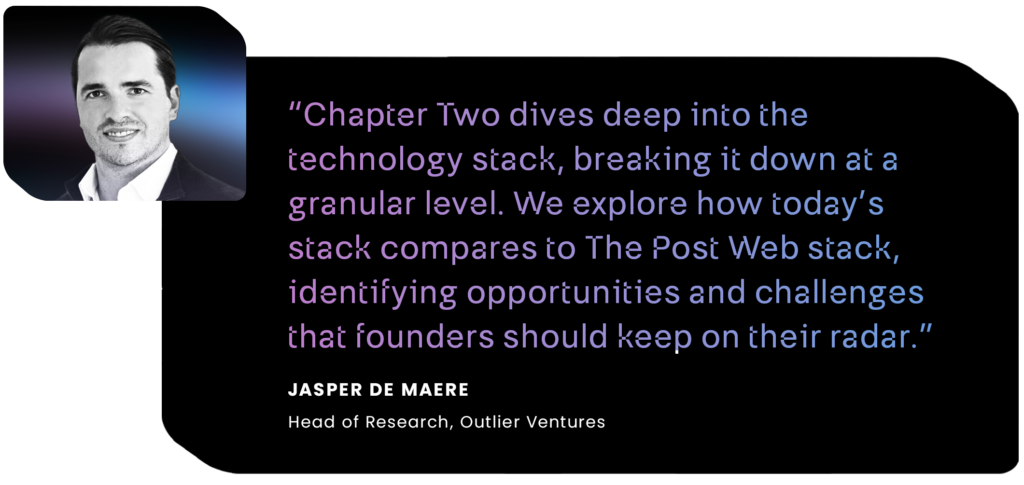
In Chapter 1, we introduced the bold concept of transitioning beyond Web3 to envision The Post Web. Now, we delve deeper, exploring the technological architecture required to realize this vision. We analyze how existing Web3 infrastructure integrates into the Post Web framework and identify the advancements needed in wallets, dApps, Distributed Ledger Technology (DLT), infrastructure, and Decentralised AI (DeAI) to bring The Post Web to life.
Chapter 2 at a Glance
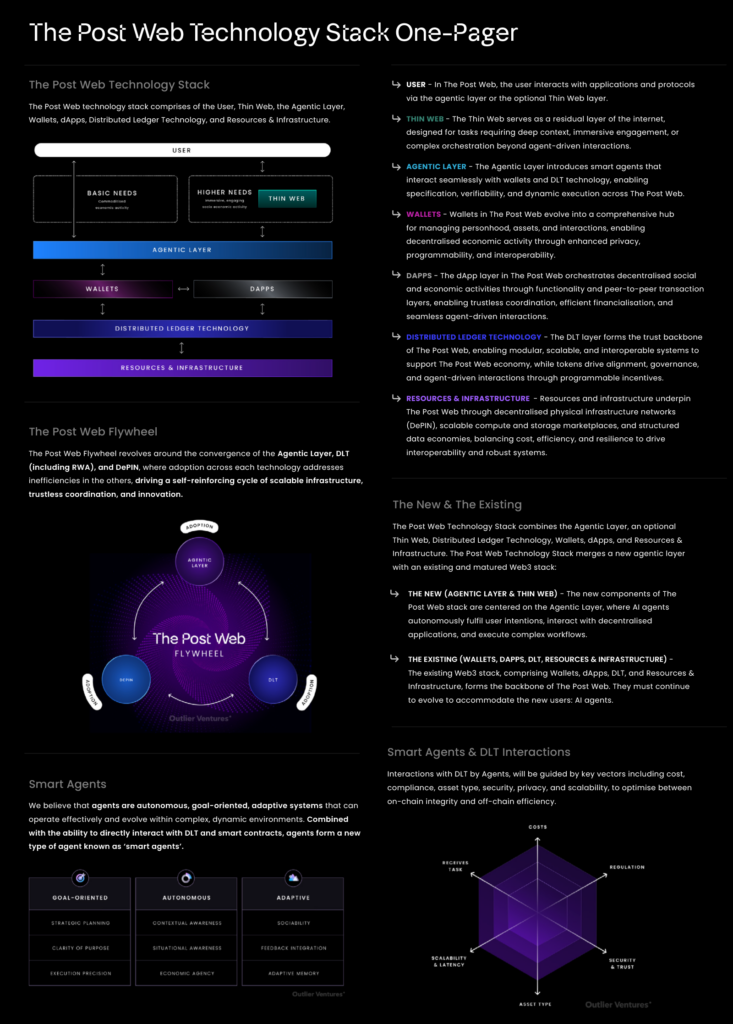
The Post Web Flywheel
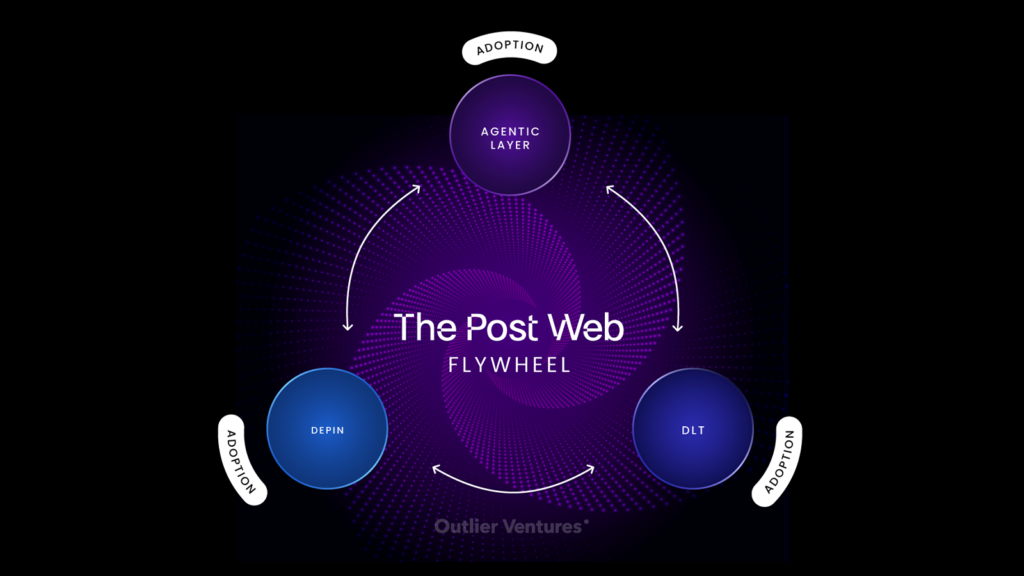
At the core of The Post Web is a flywheel powered by three interconnected technologies: the Agentic Layer, DLT (including Real-World Assets, or RWA), and Decentralised Physical Infrastructure Networks (DePIN). These layers form a synergistic system where progress in one area addresses inefficiencies in others, driving adoption, pulling in users and assets, and fuelling economic activity. This convergence creates a robust, resilient, and future-proof Post Web tech stack.
Practicality Over Purism
While decentralisation remains the long-term goal, The Post Web acknowledges the complexities of the current technological, regulatory, and economic landscape. Achieving this vision necessitates a practical approach, where some reliance on less-than-ideal systems may be necessary in the short term. Instead of advocating for abrupt disruptions, we focus on structural trends that steadily move toward decentralisation, balancing idealism with real-world constraints.
Introducing The Post Web Technology Stack
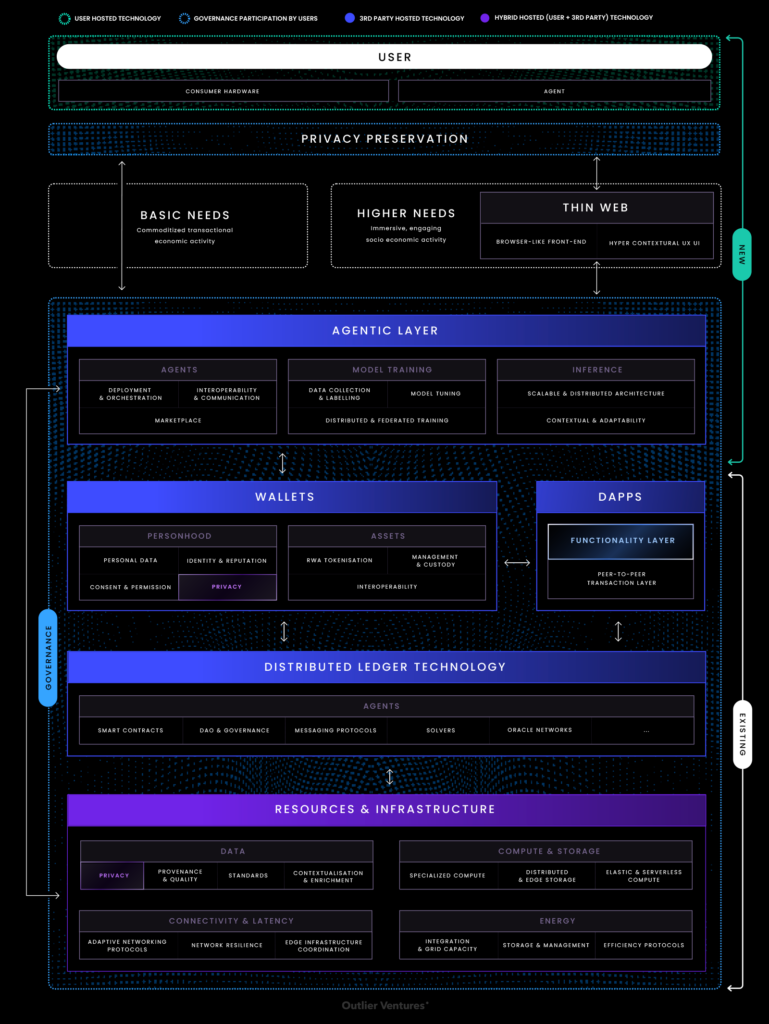
The Post Web Technology Stack builds on Web3’s achievements while introducing a new Agentic Layer, a critical new component where AI agents act autonomously on behalf of users. As more interactions move online, this stack must evolve to support these agentic users, ensuring scalability and efficiency.
Governance: Automation Meets Adaptability
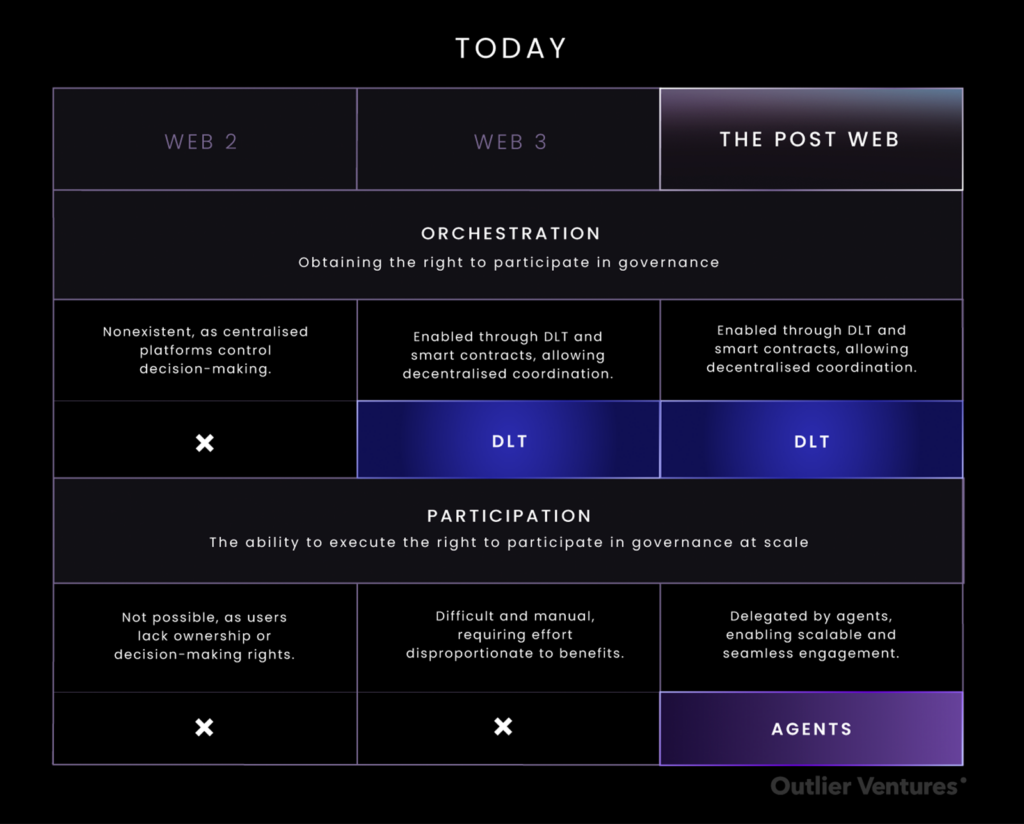
In the Web3 era, users reclaimed control and voting rights. The Post Web takes this a step further by enabling agents to execute these rights, making governance both scalable and automated. Complex decisions can blend automation with human oversight, enabling unprecedented levels of collective, fluid, and adaptive governance.
The Agentic Layer
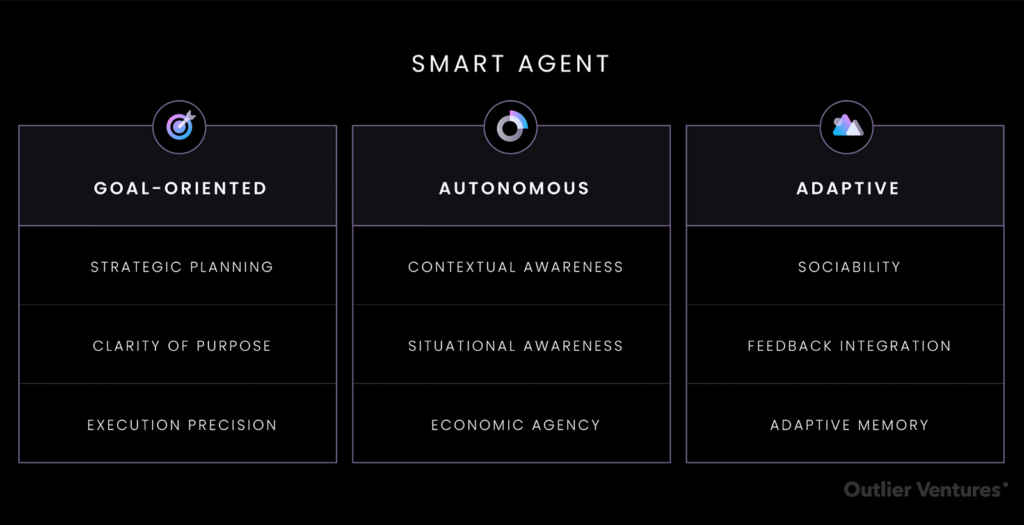
The Agentic Layer is a cornerstone of The Post Web, enabling seamless interaction between humans, machines, and protocols. Smart agents — autonomous, goal-oriented, and adaptive AI systems — play a pivotal role in this layer. They interact with DLT and smart contracts, acting as intermediaries that navigate complex ecosystems on behalf of users. In this chapter, we explore the foundations of smart agents, their deployment, and their orchestration.
Wallets in The Post Web
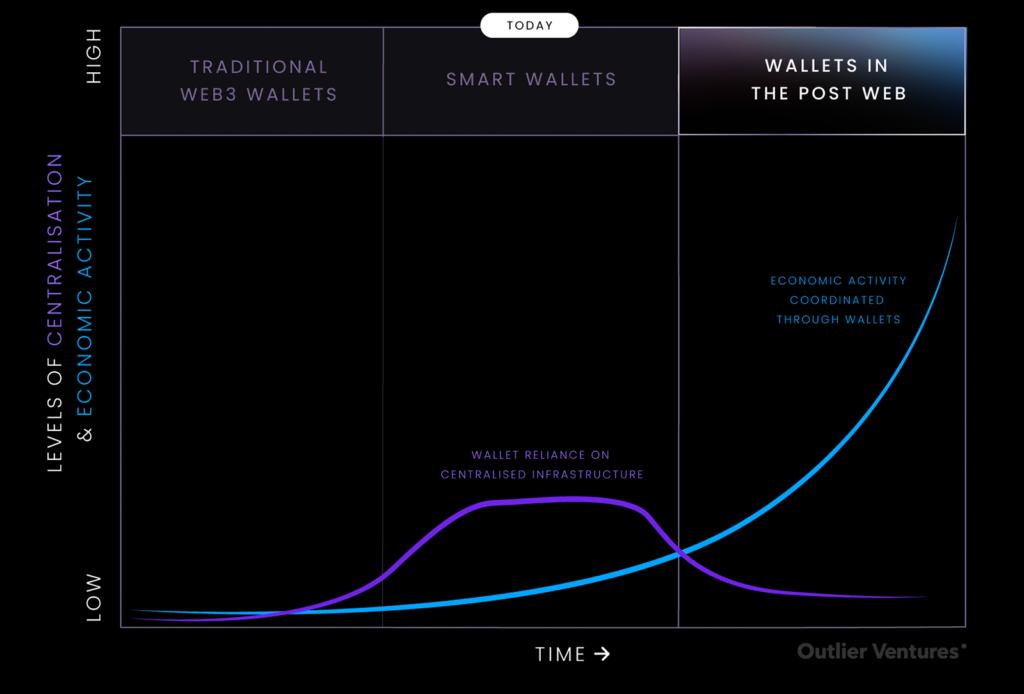
In The Post Web, wallets evolve from simple digital asset storage solutions to become comprehensive control centers for personhood and resource management. Enhanced by privacy-preserving technologies, wallets empower users to manage permissions, resources, and tasks — all while serving as secure gateways for agents to operate autonomously on their behalf. This evolution requires a rethinking of reliance on centralized infrastructure and economic coordination mechanisms.
dApps: Dual Layers of Functionality

In The Post Web, decentralised apps (dApps) are redefined into two distinct layers:
- The Functionality Layer: Designed for human and agent interactions, this layer provides services and processes tailored to user needs.
- The Peer-to-Peer Transaction Layer: Building upon today’s DeFi protocols, this layer facilitates asset exchanges and financial operations.
This division enhances scalability while preserving the decentralised principles of The Post Web, ensuring both layers remain interconnected yet purpose-driven.
Distributed Ledger Technology

Distributed Ledger Technology (DLT) remains integral to The Post Web, providing a robust system for verifying and specifying human and AI agent activities on-chain. As the ecosystem grows, the DLT stack must evolve, becoming increasingly modular and specialized. Enhanced interoperability and security will be vital to manage the expanding volume of economic activity, assets, and sensitive data hosted on-chain.
Tokens, too, play a central role in the Post Web, serving five key functions:
- Facilitating decentralised governance
- Amplifying network effects
- Enabling ownership
- Acting as mechanisms of exchange
- Driving game-theory design within agentic systems
Together, DLT and tokens provide the foundation for scalable, autonomous, and decentralised activity in The Post Web.
Resources & Infrastructure: Powering The Post Web

Resources & Infrastructure — encompassing data, compute, storage, connectivity, latency, and energy— are the backbone of The Post Web. By leveraging DePIN and tokenised systems, The Post Web dynamically orchestrates resource allocation, transforming idle capacity into actionable utility. This approach lowers barriers to entry for hosting infrastructure, ensuring scalability and efficiency.
Read the Full Chapter Now
What’s Next in The Post Web Journey?
As we move forward, expect further exploration of critical elements of The Post Web. Our upcoming chapters will focus on data and energy resources and their pivotal roles in this ecosystem. Stay up to date on continuous updates: more research, an audio documentary, webinars and more.
Join the Post Web Accelerator
The Post Web is the opportunity visionaries have been waiting for. Our Post Web Base Camp accelerator is designed to help founders lead the charge, equipping them with the tools, mentorship, and resources needed to build tomorrow’s solutions. If you’re ready to contribute to the next phase of the internet, apply now:





